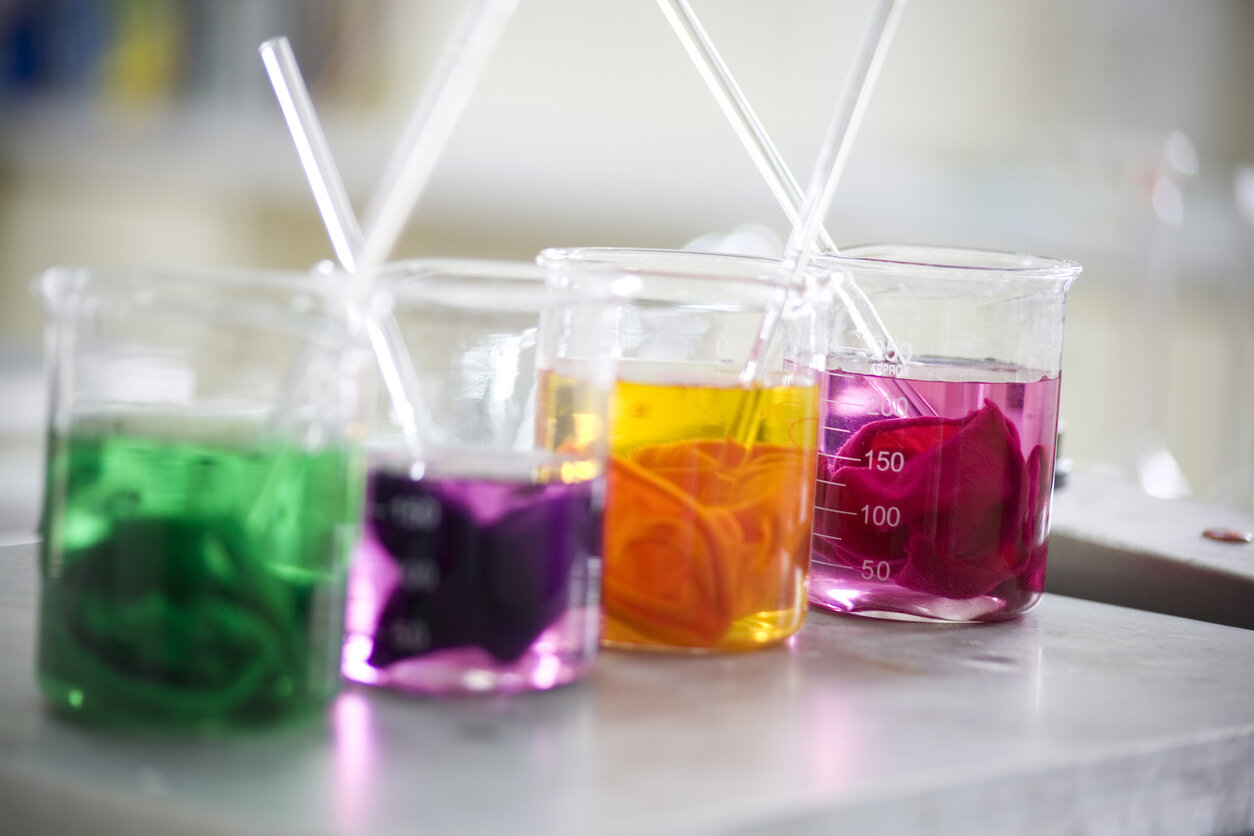Selecting the perfect color is an important part of developing a soft-goods product. As one of America’s leading textile manufacturers, CustomFabUSA knows a thing or two about choosing a fabric color that’s both durable, functional, and aesthetically pleasing.
When it comes to just the pure aesthetic value of color, choosing the right one can help differentiate a product from others on the market. But more than just having the benefits of an eye-catching appeal, a product’s color can increase its longevity and function. Dark colors, for instance, reduce the appearance of wear and tear on luggage and medical equipment by masking dirt and dust. Bright neon colors on safety equipment and carefully-designed camouflage tactical gear help keep soldiers and first responders safe in the field.
The history of fabric coloring goes back thousands of years when people used plants, minerals, and insects to dye fabrics. People used different colors depending on the minerals available in their geographic regions of the world. In ancient times, a popular color was Tyrian purple, extracted from sea snails. By the mid-1800s, innovators had developed and mass-produced synthetic dyes that opened up the selection of color variations and reduced their price.
While CustomFabUSA might not have much sea-snail dyeing experience, we do know how to manufacture products featuring fabrics that have been dyed using a variety of modern methods:
EXHAUST DYEING (AKA BATCH DYEING)
This is a common method to dye fabrics, by completely immersing dye into a material. Different machines are used depending on the fabric: Jigger dyeing machines for woven material, Winch dyeing machines for woolen material, and Jet dyeing machines for knit fabrics. Jigger dyeing is most often used. The advantage of the Jigger dyeing method is that large rolls of fabrics can be dyed with less dye. Due to the high tension created by rollers, woolen and knitted fabrics aren’t dyed with this machine.
DIPPING (AKA GRADIENT DYEING)
Dipping is when a fabric is partially immersed with dye without completely altering the existing fabric color, thus showing a blend of colors. It involves taking lighter-colored fabrics that are then dipped into a dye of a darker color. You might recognize Tie Dye as a popular “Do it Yourself” version of dipping that involves knotting the fabric. Although more specialized than other methods, Dipped fabrics can be popular for the artistic, faded look they often give a material.
SPRAYING
Spraying is when a dye is sprayed directly onto the fabric. The material is spread out and kept taut to allow for an even application of dye. Although less common than other methods of dyeing, innovation in spray dyeing techniques allow a manufacturer to use less water and chemicals. It is seen as an increasingly environmentally sustainable technology.
SCREEN PRINTING (AKA SILKSCREEN PRINTING)
Screen printing involves passing colored ink through a mesh stencil (screen) onto the fabric using a squeegee. One color is printed at a time, allowing for an overlay of multiple colors. There has been a lot of innovation in Screen Printing technology since “silkscreen” t-shirts became popular in the 1960s. Because of the low cost of equipment and materials, this is a common method of transferring colors in fashion and clothing.
COATING
Coating is when a fabric is treated with a chemical to give it a certain characteristic, such as being water-resistant, anti-microbial, fire-resistant, stain-resistant, or windproof. CustomFabUSA understands the importance of fabric coating, given the various industries our clients serve. Firefighters, soldiers, athletes, and recreational outdoor enthusiasts all rely on fabric coating when using our products.
When choosing which method to use when dying a fabric, it’s important to consider a variety of factors, including the fabric being dyed, the colors used to dye it, what product the fabric is being used to make, how the product will be used, and who will be using it.
With three decades of manufacturing mastery experience, CustomFabUSA can advise customers on which techniques work best for the product they want to manufacture. Our expertise will ensure that your soft-goods products are produced on time, on budget, and with the quality expected of an all-American factory using the latest in textile-manufacturing technology.

